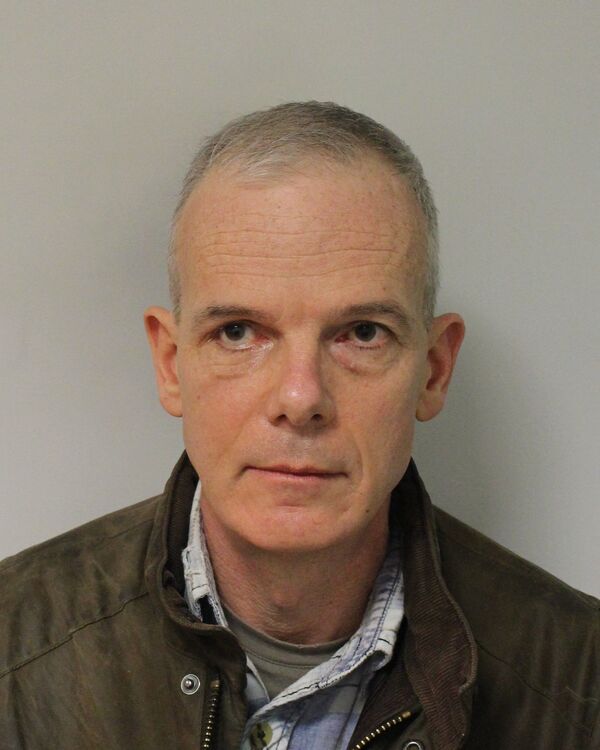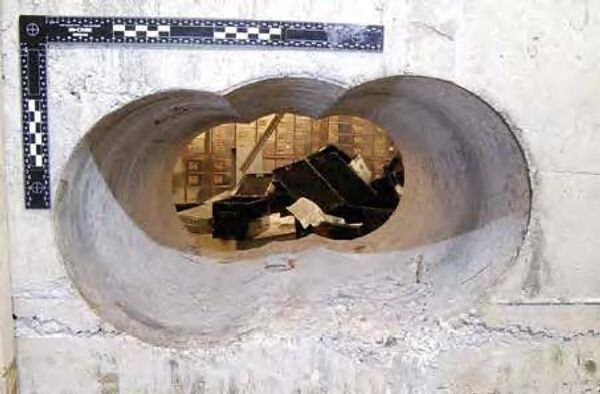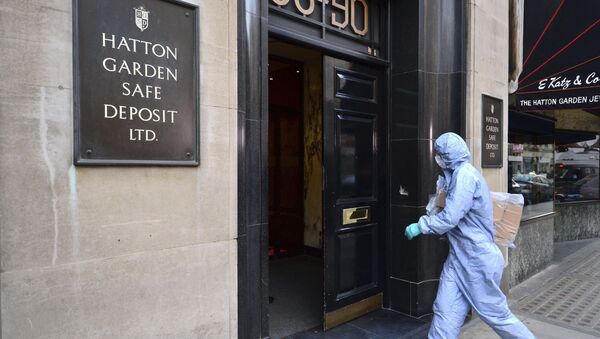Michael Seed, 58, was convicted of conspiracy to burgle and conspiracy to conceal or disguise criminal property in Friday, 15 March.
Seed, given the nickname Basil by other members of the gang, was the mastermind of the heist at Hatton Garden Safe Deposit's basement vault in central London.
He eluded the police and was only caught long after six other members of the gang had been jailed.
It was Basil who knew how to bypass the safety deposit vault's sophisticated burglar alarm, enabling the gang to get in and ransacked 73 boxes, containing an unknown quantity of treasure.

At the first trial in 2016 it became clear that mistakes had been made by the police, the alarm company and the owners of the vault at 88-90 Hatton Garden vault.
But the full details of these gaffes were fully exposed at Seed's trial at Woolwich Crown Court.
Who Was to Blame for Good Friday Blunder?
The jury was told the intruder alarm at the safety deposit centre worked properly and the police were notified when it was triggered in the early hours of Good Friday (3 April) 2015.
Mark Devereaux, whose company, MPS, remotely monitored the intruder alarm at the building, said his firm did its job by notifying the police and a director of the safety deposit centre, Manish Bhavishi, about 20 minutes after midnight.
Prosecutor Philip Evans, QC, led Mr Devereaux through the automated report which was produced by the alarm system.
It showed an employee punching in the alarm code and locking up the building at 5.58pm on Thursday 2 April 2015.
At 12.18am there was an "unconfirmed alarm indication", which would have been caused by a door censor or a vibration censor.There was then a "confirmed alarm indication" and three seconds later the system confirmed the GPRS signal had been lost."A phone call was made to the police by the monitoring centre. The police gave us a reference number.
Then Mr. Bhavishi was contacted. Then the monitoring station closed down their action," Mr. Devereaux told the court.
The trial has heard Mr. Bhavishi was contacted by MPS and told the police were on the scene.
But, due to a police switchboard error, no officers attended the safety deposit centre.
If Mr. Bavishi had bothered to attend he would have discovered Seed had managed to bypass the alarm and his gang were busily trying to drill their way into the vault.
But their drill broke and they had to go and buy a new one and return again on the Saturday night to finish boring into the vault. The loot was finally removed on the Sunday morning and the crime was not discovered until the Tuesday morning when staff arrived for work after the bank holiday weekend.

The company which ran the fault, owned by Sudanese father and son Mahendra and Manish Bavishi, was forced to call in liquidators in 2016 after it failed to recover from the reputational damage.Mr Devereaux said MPS had also ceased to exist although he still works in the security industry.
"I am frankly aghast at the levels of security at the Hatton Garden Safe Deposit Centre. This burglary simply should not have been possible," said Peter Kirkham, a security management consultant and former Detective Chief Inspector in the Metropolitan Police.
"Any response by keyholders following the alarm activation that did happen would have resulted in the gang being caught red handed. Nothing the police could have done without a key holder to gain access to the premises would have made any difference," he told Sputnik.
Mystery of How Much Was Really Inside the Boxes
Officially £13.7 million worth of precious items was stolen but it is thought some of the box owners chose not to reveal what was in their boxes and the true estimate could be nearer £100 million.
In 2016 Brian Reader, 79, Kenny Collins, 78, Daniel Jones, 61, Terry Perkins, 69, and Carl Wood, 61, were jailed for between six and seven years for conspiracy to commit burglary.

In January 2018 Collins, Jones, Reader and Perkins were ordered to pay back £27.5 million or spend seven more years in prison but the following month Perkins, 69, died in jail.
Detective Sergeant Jamie Day told the second trial Seed had entered the front door of the building using a key or "had access some other way."
Michael Reardon, a locksmith, gave evidence about the front door of 88-90 Hatton Garden, the building which contained the safety deposit centre in the basement.
"The lock was very old, very worn," Mr. Reardon told the court.
Mr. Evans asked him if it would have been possible to pick the lock.
"Originally no, but was so old and in such a bad state that could do…and you could also manipulate the door handle by putting your hand through the letterbox," Mr. Reardon said.
Who Was To Blame?
At the time of the raid it was widely reported that the Metropolitan Police would be sued because of its failure to attend the scene.
"The burglary was plainly well planned and fairly sophisticated. But it relied on exploiting the incredibly lax security at the premises. The sophistication seems to have been applied to the drilling, etc. rather than overcoming the alarm & CCTV systems. There didn't need to be much sophistication employed there as they were so basic," Mr Kirkham told Sputnik.
"The gang were immensely lucky that there was such poor security and that the response to the alarm activation was so inadequate," Mr Kirkham told Sputnik.


